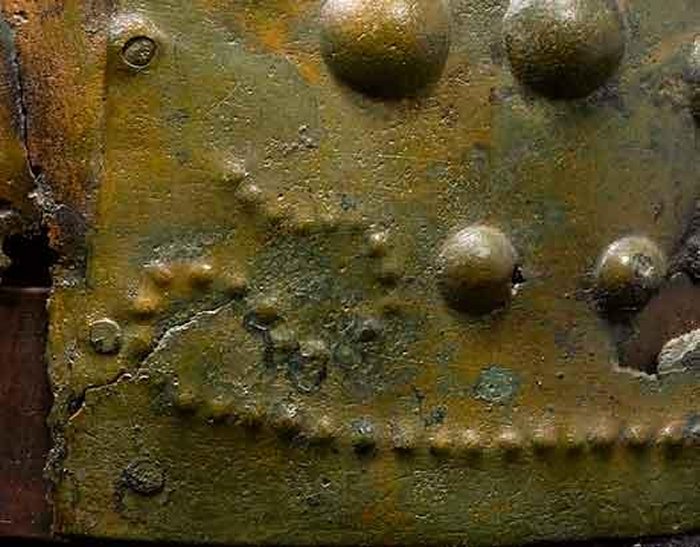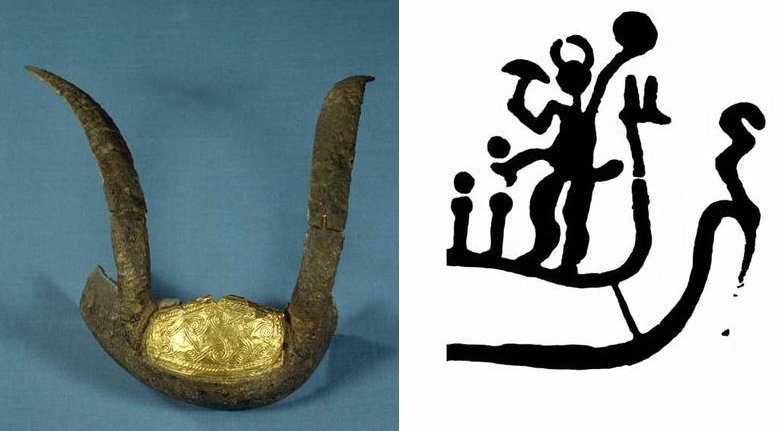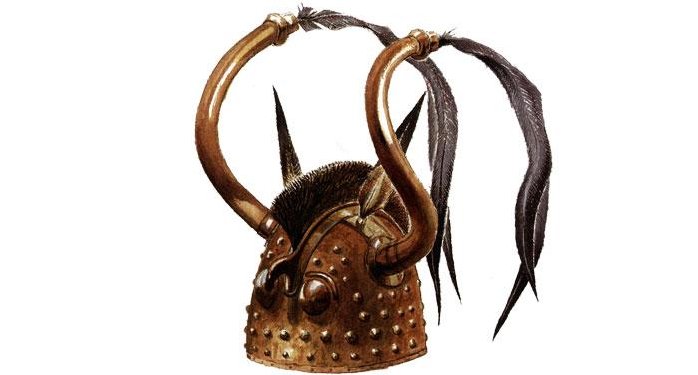Mysterious Bronze Age Viksö Helmets With Horns Related To Myths, Holy Animals And Divine Power
Ellen Lloyd - AncientPages.com - The mysterious Bronze Age Viksö helmets with horns were discovered in southern Scandinavia.
Due to their impractical size and shape, these ancient helmets were not used for war or fighting. Instead, the Viksö helmets were deliberately created for various religious ritual purposes. The elaborate carvings on the helmets have symbolic meaning, and the objects are rich in spiritual meaning and most likely related to myths about holy animals and divine power.
Left: Credit: National Museum of Denmark - Right: The horned helmets of two men's heads on a horse collar from Fogdarp in Scania, Sweden, bear a strong resemblance to the Viksø helmets. Among others, the two men are furnished with curved beaks on their foreheads. Late Bronze Age. Credit: National Museum of Denmark
Scientists think these unique Bronze Age artifacts functioned both as helmets and masks. The Viksö helmets are unique.
Ancient Pages has previously presented several truly bizarre and fearsome ancient helmets, but the Viksö helmets differ significantly and were not designed to scare any enemy.
Some of them are equipped with eyes and a hooked beak. The hooked beak of a bird of prey and the large, round eyes perhaps indicate an owl.
The helmets have manes like horses, and the horns on the helmets relate to the ox.
Viksö helmets
Feathers from a crane or another large bird could be stuck into the two small cylindrical fittings and in the ends of both horns.
The Bronze Age people had a reason to incorporate all these different animals into the design of the helmets. However, the entire purpose behind these helmets is still a matter of speculation.
Sun Symbol In Norse Mythology
We also know that Sun worship was essential, and the picture of the Sun Ship on the helmets from Viksö refers to a central myth in Bronze Age religion.
Along the edge at the base of the helmets are stylized ship pictures made out of a row of minor hammered dents. On each helmet are two ships, which stretch from the front to the back of the helmet. The ship's prow is furnished with a water bird – duck, swan, or grebe. The Sun Ship is the most important religious symbol of the Bronze Age.
Bronze figure from Glasbacka in Halland, Sweden. The figure probably wears a mask with a hooked bird's beak. Late Bronze Age.
The waterbird had a special significance in the Bronze Age perception of the Sun's continual cycle. The bird could follow the Sun and its light in all places and environments. It could dive underwater, swim, walk on the earth, and fly in the sky.
The symbol of the Sun can often be found in Norse mythology. This is the myth of the Sun's eternal journey round and round, with the help of the Sun Ship. The other important helper on this journey is the sun horse, which pulls the Sun across the sky.
The horse, the noblest and holiest of all animals, is represented on the helmets in the form of a mane. The ox, represented by the horns, can symbolize strength and wealth. In many religions, the ox is also a sacred symbol.
Along the edge of the helmets, stylized ship pictures can be seen. The prows resemble water birds.
The bird of prey, which constitutes the masks on the helmets, may also be connected to the Sun's eternal journey myth. If it is an owl, this probably relates to night-time. Finally, the added feathers from the crane, which can also be seen in Bronze Age rock carvings from Sweden, may be connected to changing the seasons. The crane is the largest and most beautiful of the migratory birds.
Two small intriguing figurines were discovered in the 18th century at Grevensvænge, near Næstved, Denmark. It is assumed that the figurines have initially been part of an ensemble arranged on a ship.
The men wear helmets with curved horns like those from Viksö. Only one of the figures is preserved today, but old drawings of the find show that the two men initially knelt beside each other, and each had a sizeable ornamental axe in one hand.
Left: mask from The Early Bronze Age, furnished with bronze horns and golden application, was found at Hagendrup in western Zealand. Credit: National Museum of Denmark
Right: Part of a rock carving from Sotetorp, Bohuslän in Sweden. The man on board the ship wears a horned helmet. Credit: National Museum of Denmark
The same motif, of kneeling men wearing helmets and carrying axes, is depicted on a razor from Vestrup in south Zealand. The men are sitting in a boat.
This is how the Viksø helmets may have looked—illustration by Anders Andersson.
Ships, helmets, and ornamental axes were all used for religious activities in the later Bronze Age. The combination of men with helmets and axes is also found on Swedish rock carvings. The warriors on the rock carvings from Sotetorp at Tanum in the Bohuslän area are helmet-clad and carry axes. They also have swords at the hip and hold a round object in the other hand. The round object may represent the Sun.
Both the twins' motive and the cultic significance of the horned helmets seem to have persisted into the early Germanic culture. The kneeling warrior figures have been interpreted as the "Ashvins" type divine twins of early Indo-European religion, sons of the sky god, known by Alcis to Tacitus.
Updated on August 30, 2024
Written by Ellen Lloyd – AncientPages.com Staff Writer
Copyright © AncientPages.com All rights reserved. This material may not be published, broadcast, rewritten or redistributed in whole or part without the express written permission of AncientPages.com
More From Ancient Pages
-
 1154 Ancient Holes At Løykja Reveal Something Extraordinary – Archaeologists Say
Archaeology | Jul 17, 2020
1154 Ancient Holes At Løykja Reveal Something Extraordinary – Archaeologists Say
Archaeology | Jul 17, 2020 -
 Rohonczi Codex Still Undeciphered – Is It The Most Secret Book Written In A Code?
Artifacts | May 30, 2014
Rohonczi Codex Still Undeciphered – Is It The Most Secret Book Written In A Code?
Artifacts | May 30, 2014 -
 World’s Oldest Beer Factory Discovered In Abydos, Egypt
Archaeology | Feb 16, 2021
World’s Oldest Beer Factory Discovered In Abydos, Egypt
Archaeology | Feb 16, 2021 -
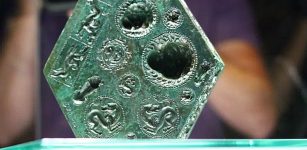 Unique 2,000-Year-Old Hexagonal-Shaped Bronze Matrix Of Sarmizegetusa Regia, Romania
Artifacts | Jan 7, 2016
Unique 2,000-Year-Old Hexagonal-Shaped Bronze Matrix Of Sarmizegetusa Regia, Romania
Artifacts | Jan 7, 2016 -
 Norse Religion Was Different Than Previously Thought – New Study Reveals
Archaeology | Feb 27, 2021
Norse Religion Was Different Than Previously Thought – New Study Reveals
Archaeology | Feb 27, 2021 -
 LIDAR Discovers Mysterious Maya Underground Chamber In The Rainforest
Archaeology | Jul 22, 2024
LIDAR Discovers Mysterious Maya Underground Chamber In The Rainforest
Archaeology | Jul 22, 2024 -
 Why Did Students Turn Medieval Oxford Into A Murder Capital?
Places | Sep 28, 2023
Why Did Students Turn Medieval Oxford Into A Murder Capital?
Places | Sep 28, 2023 -
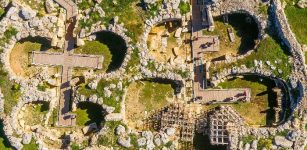 Ggantija Double Temple On Malta Is Older Than Stonehenge And Great Pyramid Of Giza
Civilizations | Jan 16, 2023
Ggantija Double Temple On Malta Is Older Than Stonehenge And Great Pyramid Of Giza
Civilizations | Jan 16, 2023 -
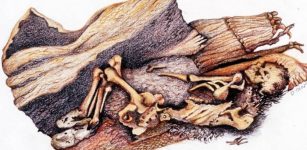 DNA Study Of Controversial Ancient North American Mummies, Including The Spirit Cave Mummy Opens An Extraordinary Chapter In Human History
Archaeology | Nov 15, 2018
DNA Study Of Controversial Ancient North American Mummies, Including The Spirit Cave Mummy Opens An Extraordinary Chapter In Human History
Archaeology | Nov 15, 2018 -
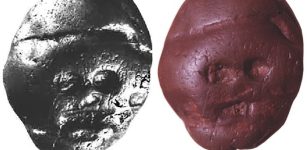 Why Are Manuports Like The Makapansgat Cobble Interesting Archaeological Artifacts?
Artifacts | Mar 15, 2024
Why Are Manuports Like The Makapansgat Cobble Interesting Archaeological Artifacts?
Artifacts | Mar 15, 2024 -
 Nilometer: Innovative Tool Measuring The Nile’s Water Levels In Pharaonic Egypt
Featured Stories | Jun 1, 2024
Nilometer: Innovative Tool Measuring The Nile’s Water Levels In Pharaonic Egypt
Featured Stories | Jun 1, 2024 -
 Lhasa’s Potala Palace: Greatest Building In Tibet With History Of 1300 Years
Civilizations | Nov 23, 2018
Lhasa’s Potala Palace: Greatest Building In Tibet With History Of 1300 Years
Civilizations | Nov 23, 2018 -
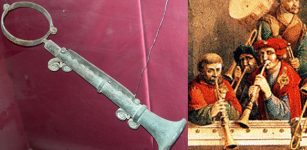 What Was The Medieval Shame Flute?
Ancient History Facts | Jan 27, 2020
What Was The Medieval Shame Flute?
Ancient History Facts | Jan 27, 2020 -
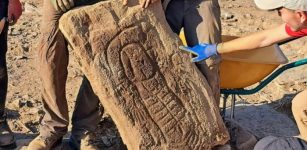 3,000-Year-Old Stela Challenges Assumptions Of Gender And Social Roles In Prehistoric Times
Archaeology | Nov 16, 2023
3,000-Year-Old Stela Challenges Assumptions Of Gender And Social Roles In Prehistoric Times
Archaeology | Nov 16, 2023 -
 Tetzacualco – Mesoamerican Mini Model Of The Universe Discovered Underwater
Archaeology | Jan 4, 2018
Tetzacualco – Mesoamerican Mini Model Of The Universe Discovered Underwater
Archaeology | Jan 4, 2018 -
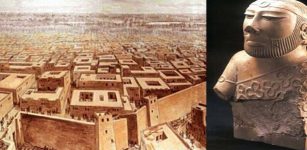 Controversial Ancient History Of Harappa And Mohenjo Daro – Advanced Indus Valley Civilization Pre-Dates Egypt’s Pharaohs And Mesopotamia
Civilizations | Apr 15, 2017
Controversial Ancient History Of Harappa And Mohenjo Daro – Advanced Indus Valley Civilization Pre-Dates Egypt’s Pharaohs And Mesopotamia
Civilizations | Apr 15, 2017 -
 19 Cannons Shot From British Ships During The American Revolution Discovered In Savannah River
Archaeology | Apr 29, 2022
19 Cannons Shot From British Ships During The American Revolution Discovered In Savannah River
Archaeology | Apr 29, 2022 -
 Tullus Hostilius: Warrior King Of Rome, Who Succeeded Numa Pompilius And Feared Prophecies
Featured Stories | Mar 6, 2019
Tullus Hostilius: Warrior King Of Rome, Who Succeeded Numa Pompilius And Feared Prophecies
Featured Stories | Mar 6, 2019 -
 Legendary ‘Orichalcum Metal’ Related To Atlantis Found In 2,600-Year-Old Shipwreck
Archaeology | Mar 3, 2017
Legendary ‘Orichalcum Metal’ Related To Atlantis Found In 2,600-Year-Old Shipwreck
Archaeology | Mar 3, 2017 -
 Who Was “Shimon”, Whose Name Appears On A 2,000-Year-old Hebrew Inscription?
Archaeology | May 20, 2023
Who Was “Shimon”, Whose Name Appears On A 2,000-Year-old Hebrew Inscription?
Archaeology | May 20, 2023




